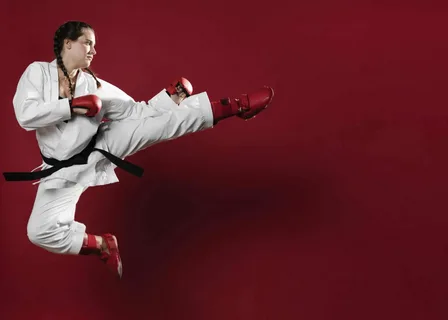
The journey of mixed martial arts (MMA) is a tapestry of cultures, traditions, and techniques woven together over centuries. Though MMA has gained colossal fame in recent years, its roots trace back to ancient civilizations, highlighting humanity’s primal urge to test combat skills in an amalgamation of different disciplines.
Ancient Beginnings
The concept of pitting various fighting styles against each other isn’t novel. As far back as 648 BC, the ancient Greeks introduced Pankration to the Olympic Games. A fierce and nearly unrestricted sport, Pankration combined elements of boxing and wrestling, and often it concluded only when one combatant was incapacitated or admitted defeat. The gladiators of Rome, too, employed a variety of fighting techniques, albeit in a much bloodier and fatalistic setting.
Eastern traditions also played a pivotal role in the evolution of mixed combat. In the East, disciplines like Muay Boran (the precursor to Muay Thai) in Thailand, and the comprehensive martial arts styles in China, incorporated diverse techniques ranging from strikes to grapples.
A Modern Renaissance
While ancient history is rife with examples of mixed combat, the 20th century ushered in a new era that ultimately led to the modern understanding of MMA. Bruce Lee, often dubbed the father of mixed martial arts, advocated for the use of effective techniques from any discipline, disregarding the limitations of singular styles. His philosophy of Jeet Kune Do emphasized adaptability and integration.
However, it was the Gracie family from Brazil that truly catapulted MMA into global consciousness. By formulating Brazilian Jiu-Jitsu, a system focusing on ground-fighting and submission grappling, they threw down the gauntlet to practitioners of other martial arts. The Gracie Challenge, wherein members of the family would face off against representatives of other fighting styles, became legendary. These contests highlighted the effectiveness of their techniques, and set the stage for an event that would change the face of combat sports.
The Birth of the UFC and Global Phenomenon
In 1993, the Ultimate Fighting Championship (UFC) was founded, an event that was originally designed to determine the most effective martial art in real combat situations. Fighters from various backgrounds – be it boxing, wrestling, karate, or Brazilian Jiu-Jitsu – faced off in a no-holds-barred setting. This tournament format not only captivated audiences but also made fighters realize the importance of cross-training in multiple disciplines to be successful.
As the years progressed, the UFC, alongside other organizations, began to implement rules and weight classes, transforming these brutal contests into a recognized sport. MMA grew in prominence, not just in the US but globally, with countries like Japan (through the PRIDE organization) showcasing its own breed of fighters.
Today, MMA is an intricate blend of striking and grappling, with fighters training in disciplines like boxing, Muay Thai, wrestling, and Brazilian Jiu-Jitsu to create a comprehensive fighting style. Modern MMA athletes are some of the most well-rounded combatants in the history of martial arts.
Integration with Modern Culture
MMA’s surging popularity also penetrated popular culture and commerce. Fans from across the globe can now immerse themselves in MMA, not only as spectators but even as participants in betting platforms. One of such platforms is 22Bet, where enthusiasts can express their sporting predictions. With a simple 22Bet login, users can engage in a holistic MMA experience, testing their analytical skills and insights against real-world events.
In conclusion, MMA stands today not just as a sport but as a testament to human spirit, resilience, and evolution. From the ancient arenas of Greece to the modern Octagons, mixed martial arts showcases the profound journey of combat, integration, and adaptation. As it continues to evolve, one thing remains certain: MMA will always represent the pinnacle of martial prowess, blending the old with the new in a dance of discipline and dynamism.







